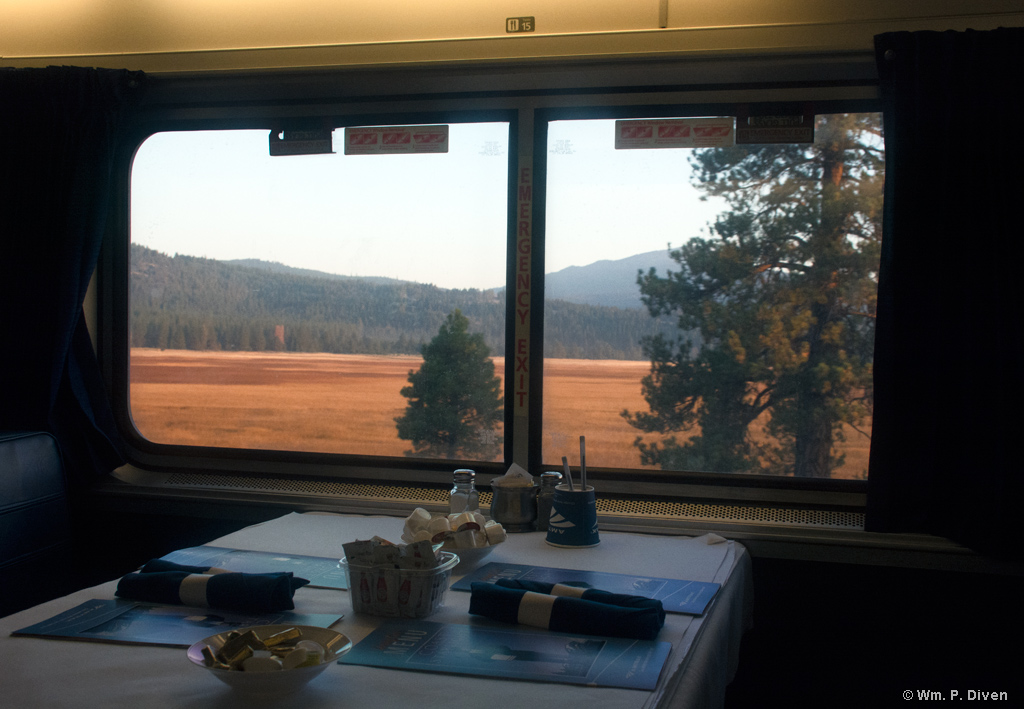
The Cascade Range of southern Oregon is not bashful about rejecting the railroad carved into its flanks as it dares men, women and machinery to conduct business as usual. Looking out from Amtrak’s southbound Coast Starlight in August 2019, the right-of-way reveals fallen trees sawn to logs and shunted aside, boulders kicked away, shiny new utility boxes and dented old ones, and freshly scraped two-tracks squirming into the forest. Propane tanks lazing here and there await the remote call to ignite railside jets when sodden snow fouls connections between the main line and passing tracks.
If Mother Nature feels petulant, she turns these mountains into a formidable adversary. Most days the railroad — once Southern Pacific, now Union Pacific – negotiates for at least a draw and minimal drama beyond the effort needed by cab crews, distant dispatchers and maintenance teams to keep freight trains and Amtrak moving. On other days one of the 20 or so tunnels may collapse as halted traffic for weeks in 2018. Snow falling as white glue last year downed timber isolating the Coast Starlight and refusing to release nearly 200 passengers and crew for a day and a half. Travelers described their experience a nightmare, hell and surreal while also relating kindness toward each other and heroes among the Amtrak service staff.
To say this high forest inland from the coastal mountains is unforgiving is a truism given the limit on mistakes can be zero. There is a friendly side as well although complicated by human imprints farther down the line.
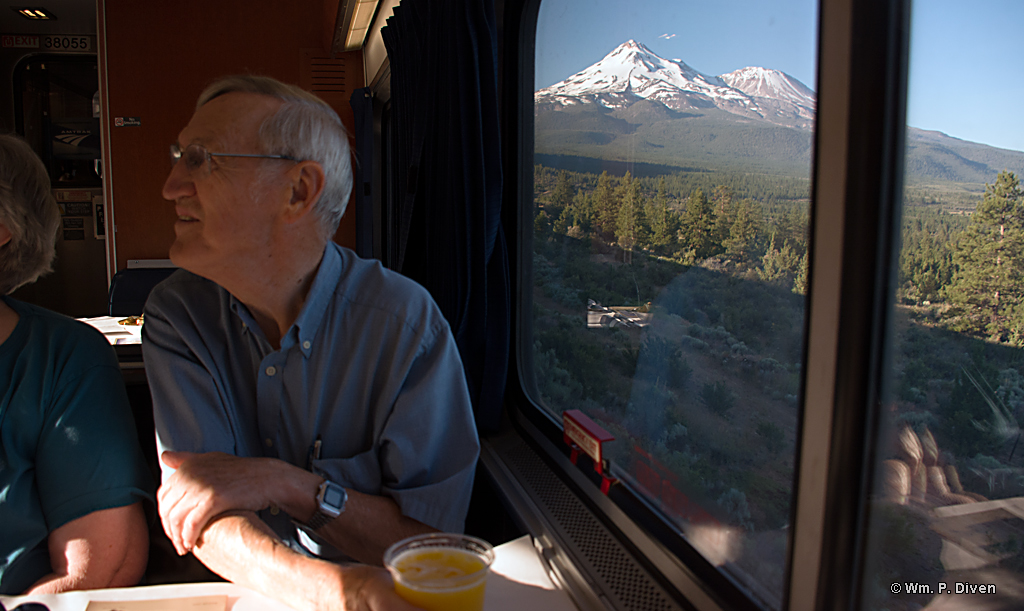
As a genteel host, the Cascades offer Amtrak passengers a peaceful stroll where breaks in dense woodlands reveal postcard views of river valleys, lakes, waterfalls, wildlife, tiny communities and glaciated volcanoes. Life slows into a rolling rhythm as strangers unlikely to meet again learn a little about each other in the lounge car and over meals. Southbound diner dinners become sedate affairs on the climb to nearly mile-high Cascade Summit as the Starlight takes 90 minutes to snake 45 miles. The steward and servers operate with friendly efficiency only nudging when coffee and conversation lingers while the next wave of reservations backs up at the doors.
“The only time when time flies on a train is when you’re either asleep or eating.”
Eric Newby, “The Big Red Train.“
Within the scenery is an expansive people story as main lines follow old routes predating Eastern interlopers converting passenger trains to time machines. Across Nevada, to pick one tale, the California Zephyr traces the route of hopeful emigrants along the Humboldt River and into the Sierra Nevada traversed in 1846 by the doomed Donner family. In these lands of sparse population and limited connectivity, packing a little research fleshes out the rolling history lessons well beyond the occasional train robbery or disaster. Some stops are long enough to step off the train, feel a new locale, chat with a crew person and give the remaining smokers a chance to light up. But don’t stray far or risk being left behind.
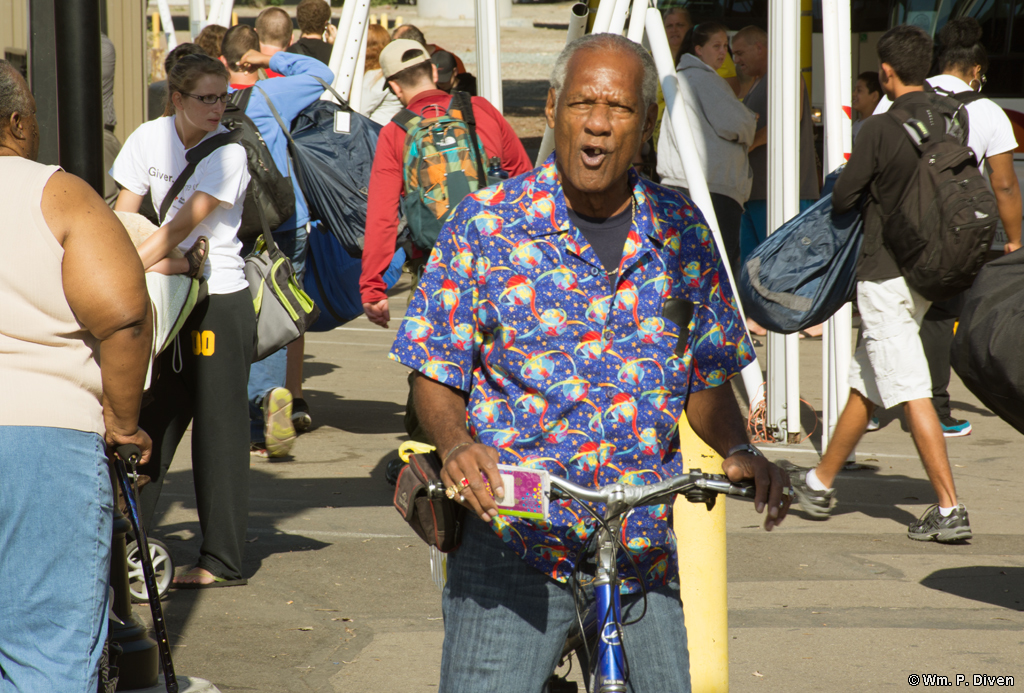
Rail travel is a tour of America’s backyards — urban and rural, natural and unnatural – a streaming kaleidoscope viewed through picture windows. Consider endless wheat fields and broad rivers, industrial scenes active or forlorn and peeks into how people live, literally a passing glance into backyards manicured and not, kiddie pools, baying dogs, barbecues and derelict cars. The spectrum of communities reveals how most of us live although few with options choose a freight railroad for a neighbor.
If Amtrak windows could open, you’d feel and smell the changes from cool, damp pines to factory exhaust to salted seaside. Call this a master class in civics, continuing education in the puzzle pieces that make America a country. Witness what can’t be seen from tin tubes in the air or the family jalopy traipsing from one generic Interstate pit stop to another. It is the difference between sleepwalking or be reminded we live in our own cocoons, those floating highest behind gates, those in the middle straining against gravity, those on the bottom worrying about dinner, all clinging to what they have.
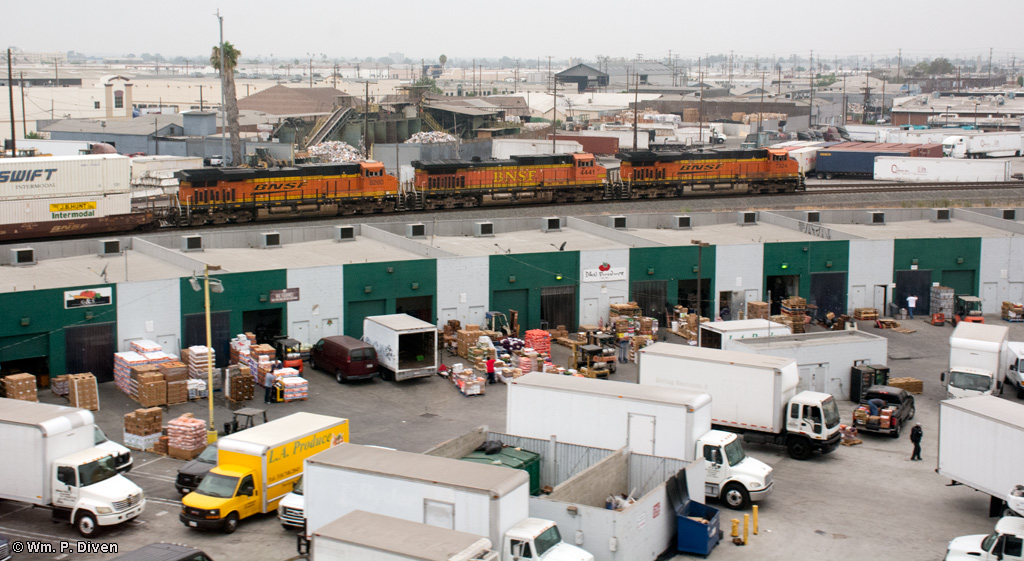
After crossing the Cascades, the Starlight greets the rising sun near sea level in central California. Here Mother Nature retreats as the built environment and human nature take control with their own sense of community and brutality. Water birds and seagoing tankers grace the Sacramento River estuary, population density increases, litter and sprayed paint accumulate and flash by. So, too, do impromptu trackside villages of tents and the makeshift shelters occupants cobbled together from found and liberated materials. Tolerance for those without a street address varies from city to city but seems most relaxed in the foundering industrial spaces shared with the railroads.
Now south of San Francisco Bay, even in the Silicon Valley of Santa Clara into San Jose, the debris fields and explosions of graffiti adorn the peoplescape. Housing is tight and expensive in Tech Mecca, but rare would be the programmer living in a structure reinforced with shipping pallets.
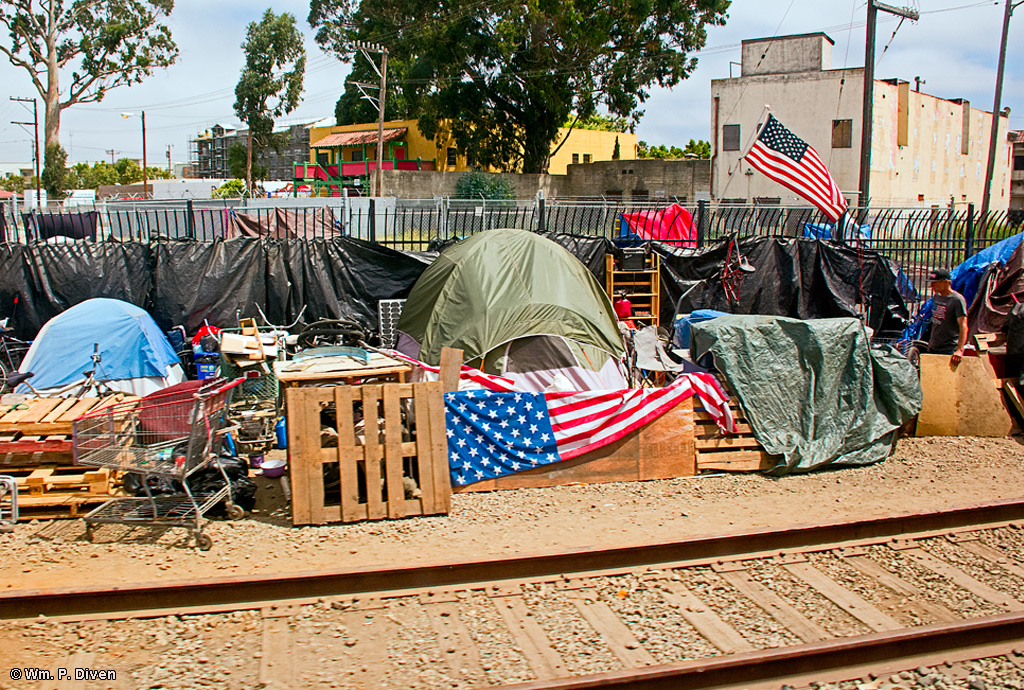
Walls separate frayed dignity beside the tracks from those with at least a toehold on the next rung up. Out of sight, out of mind, as the cliché claims, although the underside of prosperity is invisible only to those too blinded by their own light. As 2019 wound down, an estimated 150,000 California residents lacked housing, but at stoplights all across the country stand people with cardboard signs proclaiming “Fallen on hard times” or “Veteran needs help. God bless.” The costs financial and social are real, a debt coming due every day mailed to those without a permanent address. Returned to sender — that would be the rest of us — those bills pile high with added interest until the mound collapses onto everyone else. Be wary of those who claim they didn’t see it coming, especially months after a pandemic throttled the nation with economic uncertainty and lack of preparedness.

Library of Congress, Prints & Photographs Division, Carl Van Vechten Collection. (click to enlarge)
Them that’s got shall get
Billie Holliday, “God Bless the Child” (1939; written with Arthur Herzog Jr.)
Them that’s not shall lose
So the Bible said and it still is news
Mama may have, Papa may have
But God bless the child that’s got his own
That’s got his own
Beyond the Bay Area, the old Southern Pacific glides through one of America’s awe-inspiring breadbaskets where field hands lard trucks and freight trains with berries, nuts, wine and vegetables. One farming town, Gilroy, claims the title of Garlic Capital celebrating annually with a festival drawing tens of thousands. When the Starlight carried me through Gilroy a year ago, the investigation into a domestic terror attack was into its second week. With the festival in full swing, a 19-year-old white man with a target list and high-capacity clips set out to slaughter brown people managing to kill two latino children, a young man whose father is Black and mother white, and himself. Bullets hit 17 others as well.
The shooter, who grew up in the Gilroy area but had been living in Nevada, left only grief and questions behind. Pick your own favorite motive: white supremacy, murder fantasies, video games, a distaste for garlic, unable to get a date? Discount mental illness as an easy dodge but do consider the fevered mind behind racist social-media posts twisting hateful political rhetoric into selfish action.
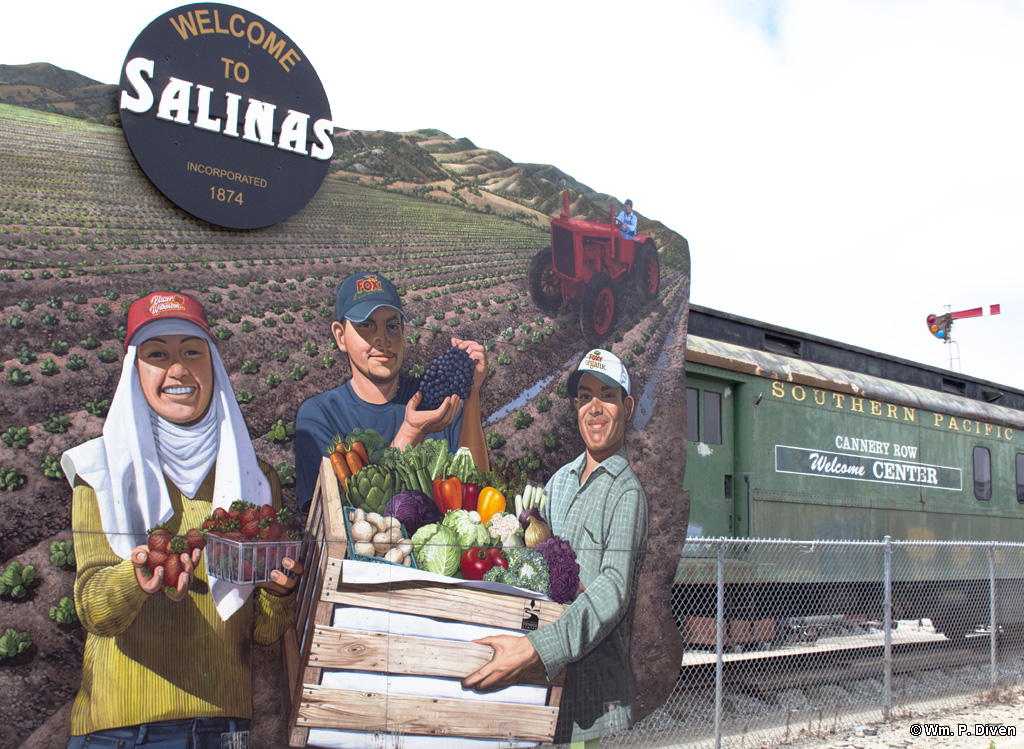
No national leader singled out Gilroy for such an attack. Its perceived crime can be found in welcoming industrious agricultural workers, brown skinned by birth or sun, some citizens of Mexico, all living in what was Mexico before the U.S. military charged in (and Native America long before that). This is Steinbeck Country where the author memorialized other emigrants seeking economic security only to endure government oppression and local violence. Those refugees, of course, were white people with leathered hands set in motion to sustain their families, enough from Oklahoma to tag all as Okies. Their struggles and search for survival are lost to those who think our history of internal conflict only dates to recent elections.
The movement changed them; the highways, the camps along the road, the fear of hunger and the hunger itself, changed them. The children without dinner changed them, the endless moving changed them. They were migrants. And the hostility changed them, welded them, united them, hostility that made the little towns group and arm as though to repel an invader, squads with pick handles, clerks and storekeepers with shotguns, guarding the world against their own people.
– John Steinbeck, “The Grapes of Wrath” (1939)
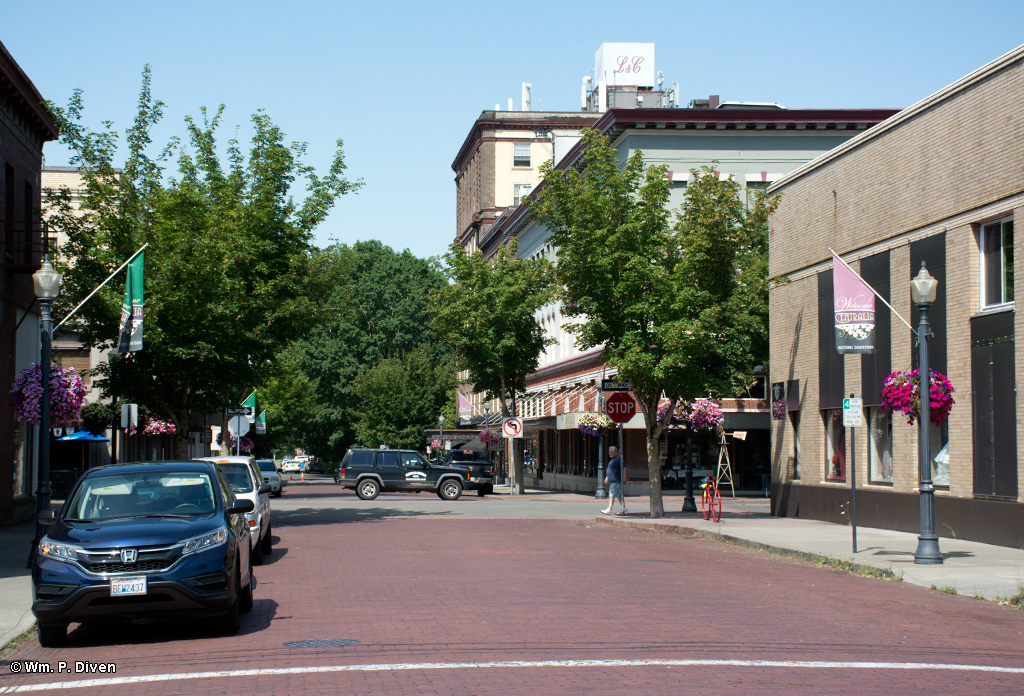
Lest you think this to be only a California phenomenon, be assured it’s not. My 2019 rail journey began on Aug. 5 in Centralia, Wash., where in 1919 labor troubles and bad blood between the American Legion and the International Workers of the World left real blood on the streets. Four Legionaires died as did one Wobbly, as I.W.W. members were known, taken from his jail cell and lynched from a bridge over the Chehalis River. The gunfire during an Armistice Day parade began about six blocks from what was then the Northern Pacific Railroad station, today part of what Amtrak calls “a stroll through a quaint downtown.”
This was the era of the first Red Scare where politicians and supposed patriots used fear of socialism and foreigners to attack labor unions and dissenters and stage violent raids rounding up immigrants and snaring U.S. citizens in the process. One aspiring 1920 presidential candidate, the “Great Red Hunter” U.S. Attorney General A. Mitchell Palmer, had by then politicized the precursor of the FBI while alleging a vast left-wing plot to overthrow the government.
After the Centralia shootings, Washington Gov. Louis Hart moved to set up Loyal Leagues in each county to suppress the I.W.W. and spread patriotic propaganda wherever possible including churches.
“We will arrange to have one service in each church on Sundays, with every word said in all places directed squarely against treasonous teachings and suggestion.”
— Washington Gov. Louis Hart, quoted in The Washington Standard, Olympia, Wash., Nov. 21, 1919. The I.W.W, founded in 1905, remains active today.
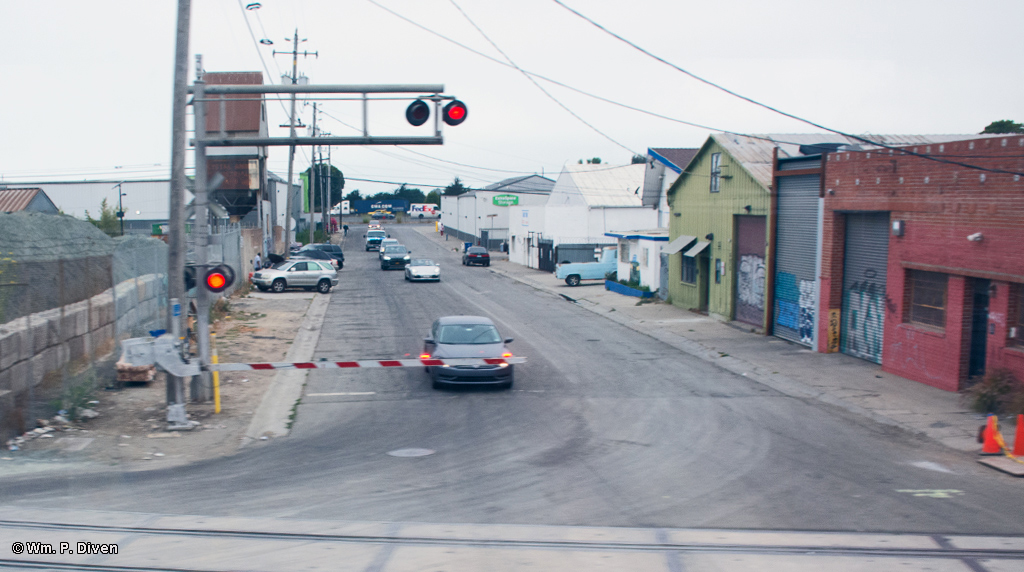
Barely 24 hours before I left Centralia, police in Dayton, Ohio, quickly gunned down a shooter wielding a modified weapon and 100-round magazine although not before he killed nine people while wounding 17 more. Police called this gunman a terrorist speculating his anger was directed not at non-Caucasians or immigrants but women.
Thirteen hours before the Dayton slaughter, a Texas man posted a racist conspiracy screed about Hispanics invading his beloved state. Never mind that Tejas was once part of Spain and then Mexico before Anglo immigrants revolted, enshrined slavery and then Jim Crow while lumping Hispanics into their white-supremacist suppressions. He then drove nearly 700 miles west from suburban Dallas to El Paso, a heavily Hispanic border city and statistically one of the most peaceful cities in the country.
Wielding a semiautomatic rifle loaded with hollow-point bullets, his chosen Walmart became a shooting gallery with brown people in the bull’s eye. He killed 22 with No. 23 dying after seven months in a hospital. This suspect surrendered and so remains only an alleged terrorist pending whatever justice looks like these days in a state that since 2000 has executed nearly 400 people without dissuading further ferocity.
“This attack is in response to the Hispanic invasion of Texas. They are the instigators, not me. I am simply defending my country from cultural and ethnic replacement brought on by the invasion.”
— Online post attributed to the El Paso massacre suspect, quoted in the Feb. 6, 2020, federal indictment charging him with hate crime resulting in death and other alleged crimes. (“Ethnic replacement” posits a wide-ranging international conspiracy to destroy the white race.)
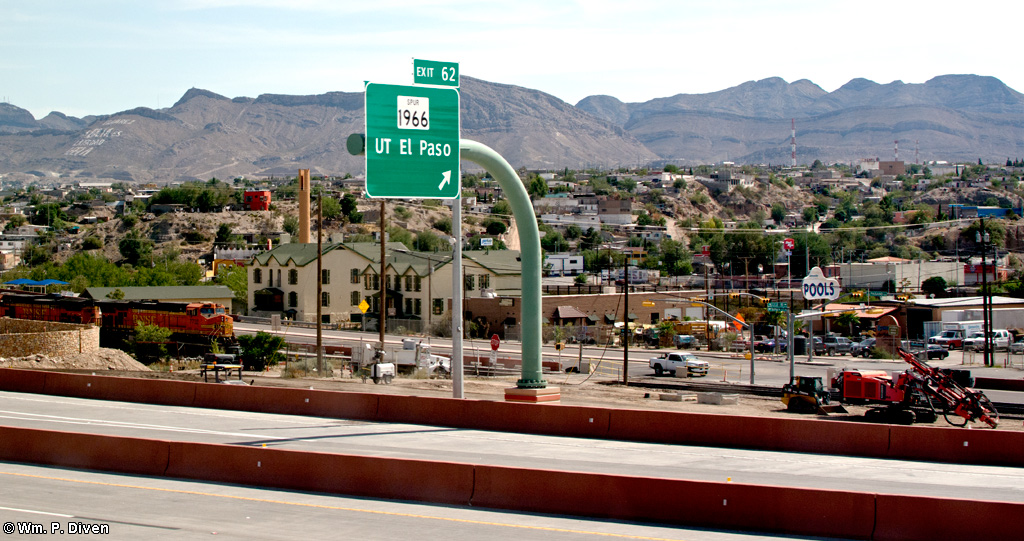
Amtrak’s Sunset Limited scraped the international border in New Mexico before crossing the Rio Grande into Texas and my destination, El Paso Union Station. It is Aug. 8, the day after President Trump flew into an unwelcoming city to bestow platitudes and sign autographs. He spoke to a gathering of local and federal law officers, chatted at a hospital with the two families of massacre survivors willing to meet and posed for photos all around with stock smile and upraised thumb. Earlier in Washington, Trump read haltingly from a teleprompter in calling bigotry and white supremacy “sinister ideologies” channeling words written by someone else.
“I think even though the president denounced hate and racism, the basis for the attack here in El Paso, it didn’t seem he was very concerned about some of the things he says and tweets and the role of some of his anti-immigrant rhetoric.”
— El Paso County Commissioner David Stout, quoted in the El Paso Times, Aug. 5, 2019.

Today human nature’s mass-casualty events fade into so-last-year’s news although for families, friends, investigators and first responders nothing is forgotten and little forgiven. For now targets are fewer as mass gatherings, save some social and political events and reopening schools and stores, cease being routine while a pandemic spawned by the natural world upends life and commerce during a presidential election year. Since January the microscopic microbe has run amok killing in the U.S. as this is written eight months later roughly 1,000 people a day nudging toward 200,000 total (or hardly any at all if you deem this a mass-conspiracy hoax). Side effects of the pandemic include monumental compassion and heroic efforts not limited to the medical professions while displaying the man-made constructs of a healthcare system spread unevenly and a tattered safety net abetted by miserly politicians. Those already ignored by much of society aren’t worried about losing the SUV or 401(k), just their lives. And now they face competition at food banks and soup kitchens and soon, as appears likely at the moment, for safe tent sites and scrap building materials.
(Due to the pandemic and significant loss of ridership, Amtrak has reduced most long-distance trains including the Coast Starlight to operating three days a week. Traditional dining service is shut down through Dec. 15 on all trains except the Virginia-Florida Auto Train substituting instead “ready-to-serve choices” and complimentary room service for sleeping-car passengers.)
It proved amazingly easy for a coronavirus to rip open national flaws decades in the making glossed over by power brokers and so-called leaders too enthralled in their own righteousness to notice dry rot eating the American foundation and framing. Shocked they are to discover the fallout from stagnant wages, consumers subsumed by debt, unaffordable and inaccessible health care, rejected science, pay-to-play public policy, denigrated news media, hometown journalism in freefall, divisive politics, hateful tribalism and world climate so damaged to be near or at collapse and perhaps beyond redemption.
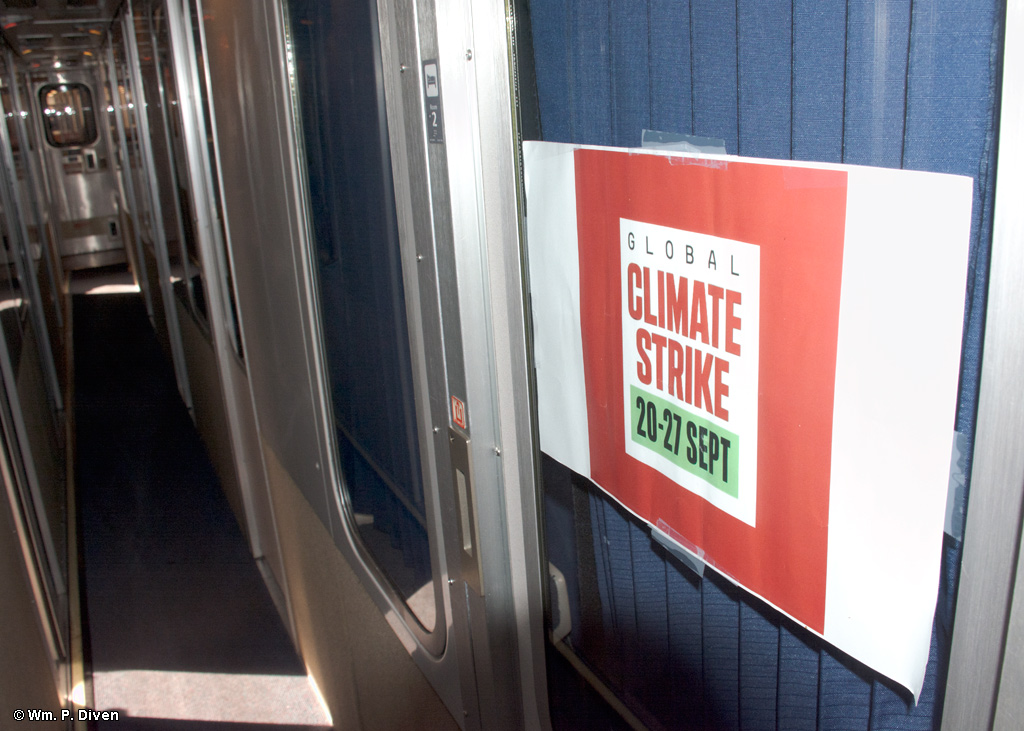
Add to all that the expectation local police will clean up social problems when their training and armament lean toward defending the status quo and keeping the downtrodden down. Similarly pinning society’s burdens on school teachers resolves little. The only curiosity is why it took so long for aggrieved citizens attuned to the rot to protest in numbers unseen since national corruptions set streets aflame in the 1960s.
If we could first know where we are, and whither we are tending, we could then better judge what to do, and how to do it. We are now far into the fifth year, since a policy was initiated, with the avowed object, and confident promise, of putting an end to slavery agitation. Under the operation of that policy, that agitation has not only not ceased, but has constantly augmented. In my opinion, it will not cease, until a crisis shall have been reached, and passed. “A house divided against itself cannot stand.” I believe this government cannot endure, permanently half slave and half free. I do not expect the Union to be dissolved — I do not expect the house to fall — but I do expect it will cease to be divided. It will become all one thing or all the other.
– Republican congressman and Senate candidate Abraham Lincoln, Springfield, Ill., June 16, 1858. Lincoln lost the election to Democrat Stephen Douglas but was elected president two years later. “A house divided … ” is a biblical reference.
I did more for the Black community than anybody with the possible exception of Abraham Lincoln, whether you like it or not.
– Donald Trump, interviewed Aug. 3, 2020, by Jonathan Swan on Axios.
Layer additionally how one more killing of a black man at the hands – or knee – of law enforcement peels away public denial, the veneer claiming justice and civil rights are dispensed equally. Just as Wall Street bloat becomes overdue for a correction, or another bubble bursts on those lacking insight, foresight or inside information, the United States is overdue for its own reawakening. The trajectory of generations leading to today was not unknown or unknowable but still leaves uncertain what comes next. Who could not foresee an eventual reckoning over our collective failure to confront the original sin of slavery finessed in our founding documents and left to fester ever since through Jim Crow, lynchings, separate but unequal schools, redlining, repressions and voter suppression, all with the fig leaf of legality?
Neither a wise man nor a brave man lies down on the tracks of history to wait for the train of the future to run over him.
— Republican presidential candidate Dwight Eisenhower, Sept. 22, 1952, speaking in Cincinnati, Ohio.
When viewing the 1950s through the perfumed gauze of nostalgia, President Eisenhower’s two terms stand out as our last easy years before the ’60s when peace and love collided with war and greed. Eisenhower’s grandfatherly public persona and his penchant for golf led many to underestimate the former general whose credits include winning World War II (although with an international coalition backing him). The ’50s weren’t that simple, of course, and his warning about the dark powers of the political-military-industrial complex still rings true (“political” was dropped from the draft of Eisenhower’s 1961 speech). TV shows like “Leave it to Beaver” or “Father Knows Best,” where moms wore pearls while cleaning house and people of color lived someplace else, could ignore the turmoil of the Cold War and fears of polio and nuclear annihilation but not forestall the Civil Rights movement, known today by many names foremost Black Lives Matter.
Those were also the last years before far-right conservatives, seething over losing the presidency to Democrats John Kennedy (a Catholic, no less) and civil-rights dealmaker Lyndon Johnson, launched jungle warfare within their own Republican Party. Over time thuggish true believers drove out the more collaborative colleagues known to work with Democrats for their districts and the country as a whole. Victory by the super-conservatives fostered scorched-earth politics camouflaged as a secret plan to end the war in Vietnam, morning in America, toughness on crime, endless war on drugs, trickle-down economics, compassionate conservatism and making America great again. Democracy, dependent on compromise and a marketplace of ideas, devolved into a back-alley shell game with preselected winners in a landscape of losers duped into thinking the hustlers really are on their side.
A theme of fighting among ourselves and boosting conspiracy theories runs deep in American politics since our earliest days. So too slander, lies and dirty tricks though not on today’s industrial scale so blatantly spewing slime although not all of it homegrown. It’s an industry peddling snake oil to the rubes while promising health, wealth, law and order and restoring obsolete industries, never mind the boosterism peaks ahead of elections and thins after.
Call our political situation, like our overheating planet, manufactured Darwinism, survival of the self-designated fittest. Perhaps that’s just human nature, self-dealing roughing up the common good for the next election or quarterly report. Ah, but then Mother Nature drops by saying, “Oh, by the way, sucker, let’s see you tweet your way out of this.” Disease transcends politics, leaving the question of whether a weakened community can survive when all you throw at a crisis is some money and the same old thoughts and prayers while leaving it to volunteers, local heroes and the communities themselves to pick up the slack. That’s hardly the model of keeping a mountain railroad running where the only way to survive is an honest assessment of problems and everybody working toward the single goal of restoring the tracks and trains to carry all riders in safety and comfort through a diverse and wondrous landscape.




Very heavy Homie, I think you dropped an “s” from “these mountain” in the second graph. I hope this took you longer to write than me to read, thought provoking and well strung together, you go Bro!
Thank you, and thanks for catching the typo. As to your other point: I’m a fast writer and you’re a slow reader (or is it the other way around?), so no telling.
…. yeah, what WPD said! It certainly seems The Four Horsemen have been here and left.